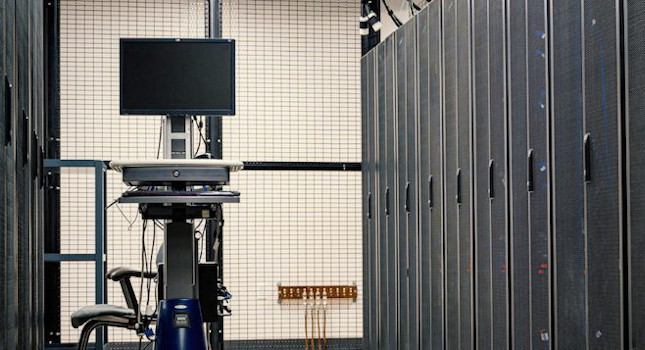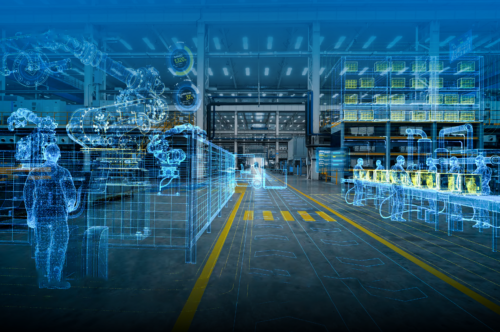How digital twins speed up the manufacturing process
Digital twins, buoyed by enhancements in CAD and CNC, is making them realistic and vital in many manufacturing applications.
Computer-aided design (CAD) has completely transformed the manufacturing process. In fact, CAD and computer numerical control (CNC) are two technologies responsible for a revolution in most of the manufactured goods we have seen in recent years. The good news is CAD continues to evolve, meaning many innovations are in the pipeline to help make the process easier.
The importance of computers in the design and manufacturing process cannot be overstated. In fact, even processes like casting that have been used since ancient times are getting an overhaul because computer-aided tools are being introduced into the pipeline. One of the biggest issues in the manufacturing process happens during the testing phase. There are many machines that need to be built before they can be tested. However, much of the testing users would like to do would damage or destroy the machine. This makes it essential to innovate in areas like digital twins.
CAD’s importance in the modern manufacturing process
CAD has allowed almost every part of the manufacturing process could be precisely controlled and simulated. We can now look at what the results of our actions will be when manufacturing. Instead of milling a piece of metal in the real world, we can do it in CAD to see if we have done it correctly. We also have digital twins in that process to ensure that things work as they should. On top of that, CAD software means that we can now optimize how we organize our manufacturing floor to get the most throughput possible. Design is only one of the many areas that CAD has revolutionized. CAD provides the ability for these solutions to be tested on a computer, speeding up the manufacturing process. It has also led to millions of dollars in cost savings.
3D printing and scanning technologies
Digital twins are being improved because of new innovations in 3D printing and scanning. These are two of the many innovations driving a digital transformation in the manufacturing world. 3D printing, called additive manufacturing, is essentially building parts layer by layer using a laser. This technology has been revolutionary in producing parts for rapid prototyping.
However, there have been many innovations in 3D printing metal parts, meaning we now see these parts in real-world applications. In fact, 3D printing is getting a lot of usage in the aerospace industry. 3D scanning is doing the opposite. Users are taking a finished part or machine and making a digital copy. This is a useful technology for machines that are no longer in production. You can create parts to repair a broken machine for which you can no longer get any parts. It is also useful for creating a digital twin without having to use a parametric modeler often typically find in most CAD software.
The value of digital twins in manufacturing
3D scanning has made creating digital twins realistic in almost every manufacturing scenario. You can think of a digital twin as a virtual representation of the object you have made. For example, it could be a digital model of a jet turbine engine. Like the real engine, you can start it, and its operation can be simulated. You could see how the air flows and how efficient it is. You can also use finite element analysis to see how usage cycles degrade its materials. Users also can create a visual twin that goes to the lifecycle of every machine. Every update and iteration can have its own digital twin. You can use that to see how certain things affect the real-life usage of that machine. CAD software is now integrating these features and many more.
Correlating the digital twin to the real world
One of the biggest problems with digital twins is correlating them to the real world. A digital twin is useless unless it works the same way as in the real world. This is why companies must go through the model and fine-tune it to operate the same way as the real-life version. That also can mean testing and tweaking various simulation algorithms. Either way, correlating your digital twin makes it possible to trust the results you get from running certain simulations on your digital twin.
Future innovations in CAD, augmented reality (AR)
In the future, CAD software is going to utilize augmented reality to improve digital twins. These tools and technologies have proved useful for many companies. Instead of working with a new model on a computer, augmented reality allows it to be projected into the real world. You can then manipulate that 3D model using various gesture controls. As technology improves, we will see more companies utilizing this method for designing and testing products before they even get to the manufacturing stage.
The need for more accurate modeling and simulation
The problem with CAD software is users never know how something will work in the real world until it’s actually built and tested. This becomes even more important when relying on accurate models. A mathematical model that isn’t completely accurate will cause problems when manufacturing. Companies are also investing in more accurate modeling solutions to make digital twins more useful and relevant to the current manufacturing paradigm.
Manufacturing is going through a rapid digital transformation. In the future, more accurate modeling and simulation tools will lead to that digital transformation becoming more widespread. There will be many more accurate digital twins that allow companies to test, design, and iterate faster than they ever thought was possible.
– DEP is a CFE Media and Technology content partner. Edited by Chris Vavra, web content manager, Control Engineering, CFE Media, cvavra@cfemedia.com.
Do you have experience and expertise with the topics mentioned in this content? You should consider contributing to our CFE Media editorial team and getting the recognition you and your company deserve. Click here to start this process.




